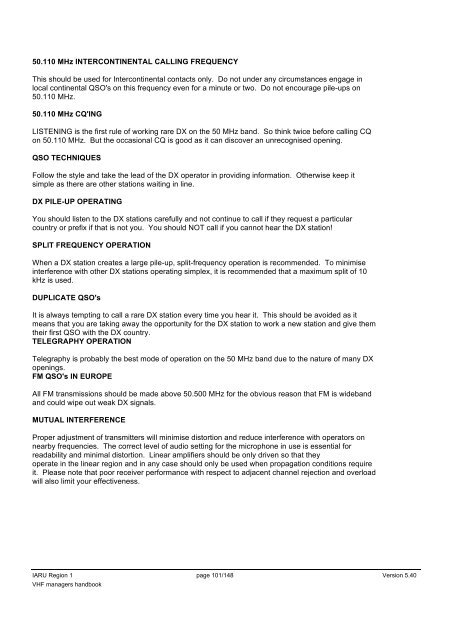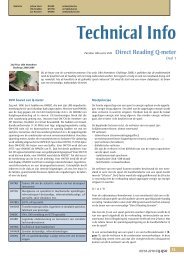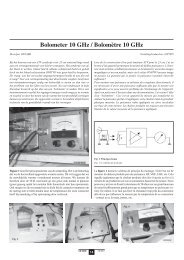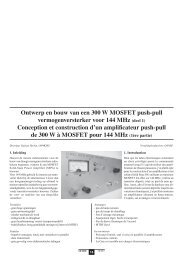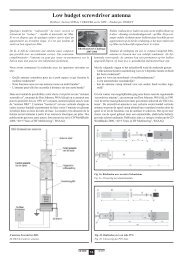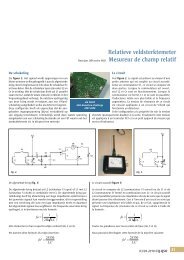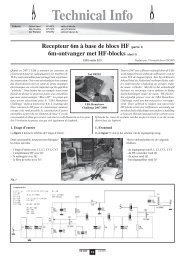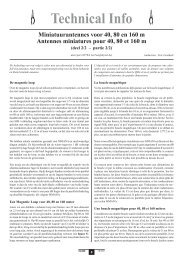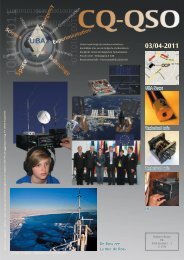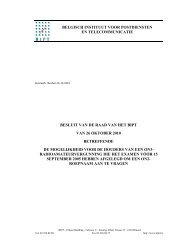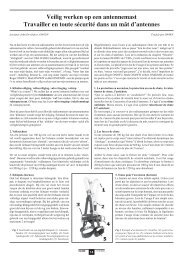IARU Region 1 VHF Managers Handbook - UBA
IARU Region 1 VHF Managers Handbook - UBA
IARU Region 1 VHF Managers Handbook - UBA
You also want an ePaper? Increase the reach of your titles
YUMPU automatically turns print PDFs into web optimized ePapers that Google loves.
50.110 MHz INTERCONTINENTAL CALLING FREQUENCY<br />
This should be used for Intercontinental contacts only. Do not under any circumstances engage in<br />
local continental QSO's on this frequency even for a minute or two. Do not encourage pile-ups on<br />
50.110 MHz.<br />
50.110 MHz CQ'ING<br />
LISTENING is the first rule of working rare DX on the 50 MHz band. So think twice before calling CQ<br />
on 50.110 MHz. But the occasional CQ is good as it can discover an unrecognised opening.<br />
QSO TECHNIQUES<br />
Follow the style and take the lead of the DX operator in providing information. Otherwise keep it<br />
simple as there are other stations waiting in line.<br />
DX PILE-UP OPERATING<br />
You should listen to the DX stations carefully and not continue to call if they request a particular<br />
country or prefix if that is not you. You should NOT call if you cannot hear the DX station!<br />
SPLIT FREQUENCY OPERATION<br />
When a DX station creates a large pile-up, split-frequency operation is recommended. To minimise<br />
interference with other DX stations operating simplex, it is recommended that a maximum split of 10<br />
kHz is used.<br />
DUPLICATE QSO's<br />
It is always tempting to call a rare DX station every time you hear it. This should be avoided as it<br />
means that you are taking away the opportunity for the DX station to work a new station and give them<br />
their first QSO with the DX country.<br />
TELEGRAPHY OPERATION<br />
Telegraphy is probably the best mode of operation on the 50 MHz band due to the nature of many DX<br />
openings.<br />
FM QSO's IN EUROPE<br />
All FM transmissions should be made above 50.500 MHz for the obvious reason that FM is wideband<br />
and could wipe out weak DX signals.<br />
MUTUAL INTERFERENCE<br />
Proper adjustment of transmitters will minimise distortion and reduce interference with operators on<br />
nearby frequencies. The correct level of audio setting for the microphone in use is essential for<br />
readability and minimal distortion. Linear amplifiers should be only driven so that they<br />
operate in the linear region and in any case should only be used when propagation conditions require<br />
it. Please note that poor receiver performance with respect to adjacent channel rejection and overload<br />
will also limit your effectiveness.<br />
<strong>IARU</strong> <strong>Region</strong> 1 page 101/148 Version 5.40<br />
<strong>VHF</strong> managers handbook


